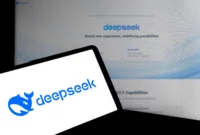A Blogger’s Guide to Understanding Human vs AI Writing in the Digital Era
The Rise of AI in Writing
AI or a Human Mind – The world of online writing has changed dramatically in just a few short years.
Artificial Intelligence (AI) tools, such as ChatGPT, Jasper, and other content generators, have made it incredibly easy to create full-length articles in seconds.
For bloggers and digital creators, this technology is both a blessing and a challenge. On one hand, AI can save time and help overcome writer’s block. On the other, it raises an important question:
Can readers still tell whether an article was written by a real person or by AI?
This question matters now more than ever. As Google refines its algorithms to reward original, high-quality, and human-centered content, knowing how to recognize authentic writing — or ensuring that your own writing feels genuine — is crucial for maintaining credibility and visibility online.
In this article, we’ll explore in detail how to differentiate AI-generated content from human-written text, the key signs to look for, and why authentic human voice remains irreplaceable in the world of blogging.
read also: Best 30 Jobs You Can Specialize In That Cannot Be Replaced by AI
1. Understanding What Makes Human Writing Unique
Before we can detect AI-generated content, it’s essential to understand what makes human writing special in the first place.
1.1. Emotion and Authenticity
Human writing often reflects emotion — joy, frustration, curiosity, empathy — feelings that stem from personal experience. A person writes with intention and meaning; they express values, beliefs, and opinions.
AI, on the other hand, simulates emotion based on patterns. It can sound empathetic or passionate, but it doesn’t feel those emotions.
When a blogger writes, “I remember the first time I hit ‘publish’ on my blog — my heart was racing,” you instantly sense a personal connection. That spark of life is what machines struggle to replicate.
1.2. Imperfection as Identity
Humans are not perfect — and that’s part of the charm. We make minor grammar mistakes, use unexpected word choices, or write in uneven rhythm.
AI-generated content tends to be grammatically flawless but stylistically flat. Ironically, those imperfections often signal human authenticity.
1.3. Creativity and Context
People draw inspiration from their environment, emotions, and experiences.
AI, however, generates based on probabilities — predicting what “should” come next. As a result, AI text often lacks deep insight or originality. It might summarize information well, but rarely produces new ideas.
2. Common Signs an Article Might Be Written by AI
As a blogger or reader, spotting AI writing is becoming a valuable skill. Here are some reliable indicators.
2.1. The “Too Perfect” Syndrome
AI writing often feels smooth, balanced, and impeccably structured — perhaps too much so. The sentences are evenly formatted, the tone is neutral, and transitions are precise.
But if you read closely, it may lack soul. There’s no sudden humor, no unexpected turn of phrase, no voice that feels alive.
2.2. Lack of Personal Pronouns or Perspective
Humans frequently use pronouns like I, we, and you, addressing the reader directly or sharing experience. AI content often avoids them to maintain generality.
An article that sounds detached — focusing purely on “facts” without human connection — might be machine-generated.
2.3. Repetition of Ideas
AI often repeats the same idea in slightly different wording. This is because it aims to meet a certain length or reinforce coherence but lacks understanding of natural flow.
If a paragraph seems to echo previous sentences unnecessarily, that’s a common AI pattern.
2.4. Generic Examples and Vague References
AI-generated articles frequently use placeholders like:
- “Many people believe…”
- “Some experts suggest…”
- “Studies show…”
Yet there’s no citation or real-life example. Human writers usually offer context, such as, “According to a 2024 study from Harvard University…” or share anecdotes. That level of specificity is typically missing from AI text.
2.5. Emotion Without Substance
AI can use emotional words (“amazing,” “incredible,” “beautiful”), but without true connection. The writing tells emotion but doesn’t show it.
In contrast, humans use stories, metaphors, or sensory detail to make readers feel something.
3. Deeper Clues Hidden in the Writing Style
AI detection isn’t just about surface signs — it’s also in how ideas develop.
3.1. Logical but Lifeless Flow
AI writing follows perfect logic but often misses nuance. Paragraphs connect mechanically, not naturally. You might notice:
- Overly symmetrical sentences.
- Predictable introductions and conclusions.
- Repeated use of connectors like “additionally,” “moreover,” or “in conclusion.”
Human writing flows more organically — sometimes breaking rules, shifting tone, or jumping between ideas creatively.
3.2. Lack of Surprise or Humor
AI struggles with wit, irony, and unexpected phrasing.
Humans love wordplay, humor, and cultural references. For example:
“Writing with AI feels like having a polite robot friend who never laughs at your jokes.”
That kind of subtle humor rarely appears in AI text.
3.3. Emotional Transitions
Humans often express transitions emotionally (“At first, I doubted myself, but later I learned…”).
AI transitions are factual and emotionless (“Initially, challenges occurred. However, improvements followed.”).
4. How Bloggers Can Detect AI-Written Content
If you run a blog or accept guest posts, verifying whether content was created by AI is important for authenticity and SEO integrity. Here are practical methods:
4.1. Use AI Detection Tools
Websites like GPTZero, Copyleaks AI Detector, Content at Scale AI Detector, and Originality.ai can scan text and provide probabilities of AI authorship.
However, remember:
- These tools are not foolproof.
- Advanced AI can evade detection with light human editing.
- Even human text may sometimes trigger “AI-like” signals.
So, treat detection tools as assistants, not judges.
4.2. Check the Author’s Voice
If someone regularly submits guest posts, compare their previous work. Does the tone, word choice, or rhythm suddenly change drastically? If yes, an AI tool might have been used.
4.3. Ask for Process Transparency
Encourage guest contributors to share whether they used AI assistance. Responsible use of AI isn’t unethical — what matters is honesty and value addition. Bloggers should normalize transparency instead of suspicion.
4.4. Run a Plagiarism Check
AI doesn’t “copy,” but it can generate text similar to existing content. Using a plagiarism checker helps ensure originality and avoid duplication penalties on Google.
5. Why the Difference Matters for SEO
For bloggers aiming to rank on Google, distinguishing between human and AI writing isn’t just curiosity — it affects visibility.
5.1. Google’s E-E-A-T Principle
Google’s algorithm prioritizes content that demonstrates:
- Experience – written from real-life knowledge.
- Expertise – shows authority and factual accuracy.
- Authoritativeness – comes from credible sources.
- Trustworthiness – transparent and authentic.
AI writing can mimic expertise, but it can’t provide experience. That human touch is what helps blogs perform better long-term.
5.2. Risk of Over-Optimization
AI tends to overuse keywords or follow formulaic structures, which may harm readability.
Human writers can balance SEO strategy with creative flow, producing engaging yet optimized posts.
5.3. Reader Engagement
People don’t stay long on soulless pages. Even if AI content ranks briefly, readers often bounce quickly if it feels robotic. Authentic writing builds emotional connection — a key SEO signal for dwell time and repeat visits.
6. Human and AI Collaboration: The Middle Ground
The truth is, AI is not the enemy — it’s a tool. The key is balance.
6.1. AI as a Writing Assistant
AI can help brainstorm ideas, fix grammar, or outline structure.
But bloggers should always add their own insight. Think of AI as a digital editor, not the main author.
6.2. Maintain Your Unique Voice
Even if you use AI for drafts, infuse it with your personality — humor, stories, beliefs, or experiences. Readers follow you, not the machine.
6.3. Ethical Use of AI in Blogging
Transparency builds trust. If AI helped generate parts of your content, consider disclosing it. Honesty about your creative process enhances credibility and differentiates you from content spammers.
7. How to Train Yourself to Read Critically
To distinguish between AI and human writing more effectively, train your reading skills.
7.1. Read Actively
Ask questions as you read:
- Who’s speaking here — a person or a pattern?
- Does this sound like lived experience?
- Is the writing too polished to feel real?
7.2. Pay Attention to “Voice”
Every human writer has a distinct rhythm and vocabulary fingerprint. AI writing, even when advanced, often sounds neutral — almost like a professional template.
7.3. Follow Emotion, Not Grammar
AI wins in grammar, but humans win in emotion.
If an article makes you feel something real, there’s likely a person behind those words.
8. Examples of Human vs AI Writing
Let’s look at two examples on the same topic.
Topic: “The Joy of Morning Coffee”
AI Version:
“Drinking coffee in the morning helps improve focus and productivity. Many people enjoy coffee for its aroma and taste, which can enhance mood and provide energy throughout the day.”
Human Version:
“The first sip of coffee feels like the world finally exhales. It’s not just caffeine — it’s comfort in a cup, a tiny ritual that makes chaos seem manageable.”
See the difference? The AI version is factual but emotionless. The human version evokes imagery, emotion, and personality.
9. The Future of Writing: Can AI Ever Truly Replace Humans?
Many experts believe AI will continue improving — generating text indistinguishable from human writing. But even then, it lacks one key element: consciousness.
Humans don’t just process information — we interpret it. We give meaning to experience, create art, and express compassion.
AI can replicate language, but it cannot replicate life experience. That’s why authentic storytelling will always matter.
In the blogging world, personality is power. Readers come for your unique story, your humor, your struggles — things an algorithm can’t invent.
10. Conclusion: Keeping Humanity in the Digital Word
As AI reshapes the landscape of content creation, bloggers and readers alike face a new challenge — learning to value the human voice in a sea of generated text.
Here’s the truth:
AI can write, but only humans can connect.
So whether you’re creating your next blog post or reading an article online, pay attention to the details — the imperfections, the emotions, the opinions. Those are the fingerprints of humanity.
As a blogger, don’t fear AI. Instead, use it wisely — as a tool to support your creativity, not to replace it. Because in the end, what readers truly seek isn’t just information — it’s authentic connection, and that’s something only a human mind can deliver.





